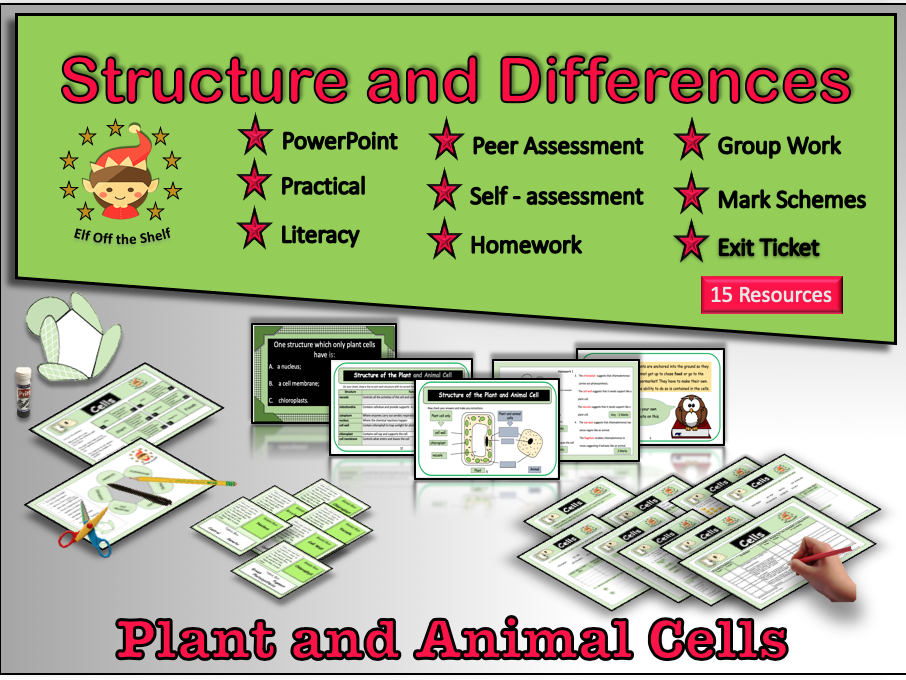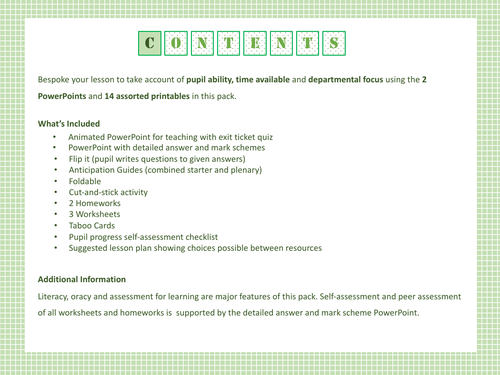










This action-packed, differentiated, lesson on the structure of plant and animal cells is fully resourced with 12 activities and 14 learning outcomes. Pupils learn to label and know the functions of the nucleus, cell membrane, cytoplasm, mitochondria, cell wall, chloroplasts and vacuole. It explains that differences between plant and animal cells stem from the lack of a skeleton in plant so that the cells must provide support and that plants, anchored into the ground and unable to move to hunt, must make their own food.
Easy to follow instructions are given on PowerPoint and worksheets so that the lesson practically runs itself.
Activities include literacy, group work, peer assessment, self-assessment, pupil response to assessment and feedback to teacher on pupil learning via an exit ticket quiz.
This pack contains material for two hours lesson time in total to enable the teacher to select resources to totally bespoke their lesson according to pupil ability, time available for the topic and focus of departmental/school policy. Any unused resources can be utilized as additional homework or pre-examination revision.
An easy to follow one-page flow chart lesson plan indicates where logical choices between resources can be made and indicates whether each activity includes literacy, oracy or AFL .
Objective
- To know why plant and animal cells are different.
- To be able to label the parts of plant and animal cells
- To know the function of the parts of plant and animal cells.
- To be able to discuss whether unicellular organisms such as chlamydomonas is a plant or an animal.
Resources
- Animated 28 slide PowerPoint-includes 10 question exit ticket quiz
- Anticipation guide (starter and plenary)
- Flip It
- 12 Taboo Cards
- Fact sheet
- Foldable
- Fact Share Worksheet
- Exit ticket
- ABC cards
- 2 differentiated worksheets
- 2 differentiated homework
- Flow chart lesson plan
- PowerPoint with answers /detailed mark schemes for homework/classwork sheets-pupils of all abilities can self-assess or peer assess.
Plant and Animal Cells- Structure, Differences and Specialisation Boardgame KS3
Specialised Cells KS3 - Fully Resourced Revision Lesson
Plant and Animal Cells KS3 - 42 Question Card Sort Team Game
Fully resourced and differentiated lessons on this topic are available at my shop
Something went wrong, please try again later.
This resource hasn't been reviewed yet
To ensure quality for our reviews, only customers who have purchased this resource can review it
Report this resourceto let us know if it violates our terms and conditions.
Our customer service team will review your report and will be in touch.